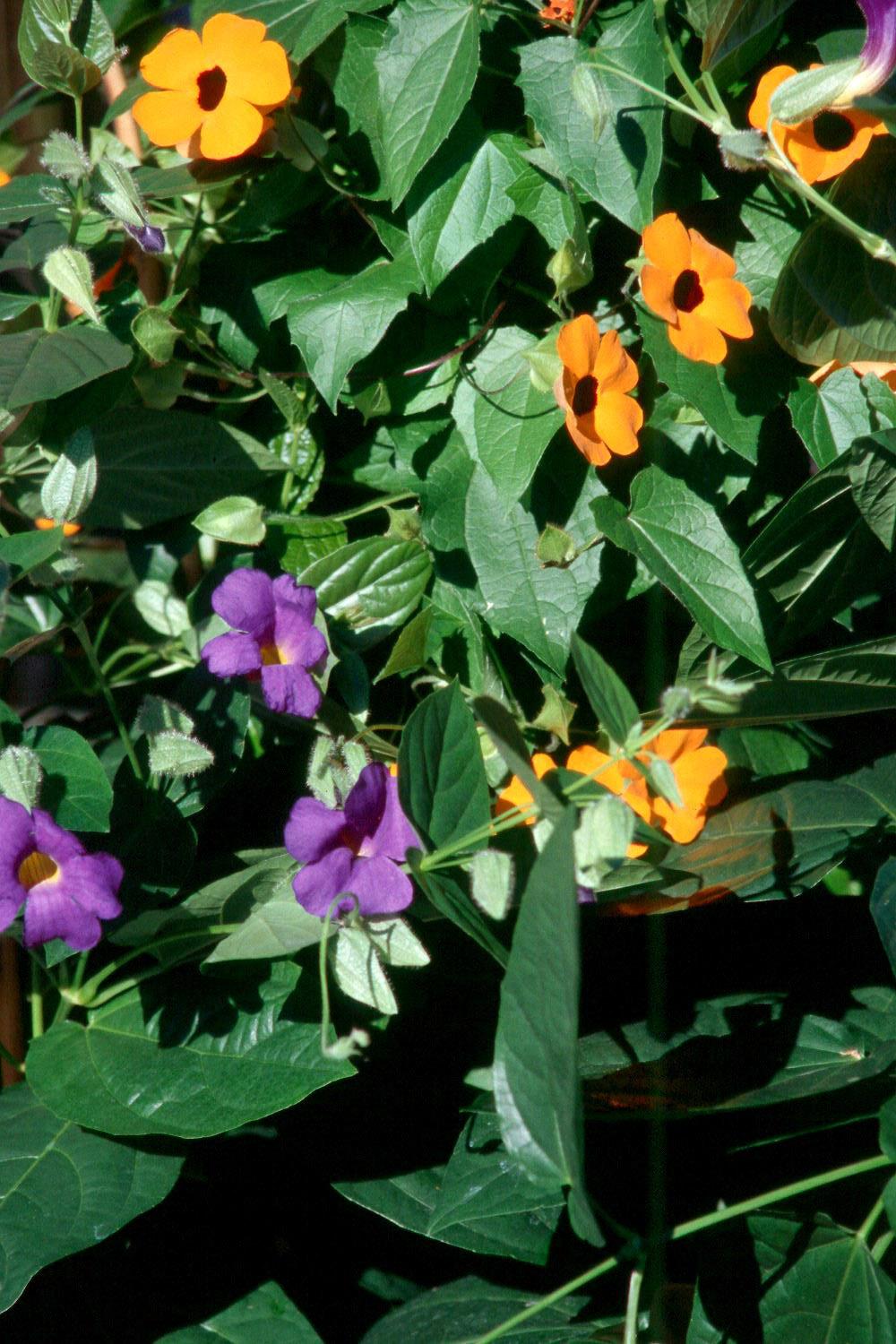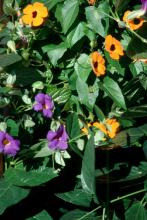Information Possibly Outdated
The information presented on this page was originally released on June 16, 2003. It may not be outdated, but please search our site for more current information. If you plan to quote or reference this information in a publication, please check with the Extension specialist or author before proceeding.
Blue Glory is hot, new vine
By Norman Winter
MSU Horticulturist
Central Mississippi Research & Extension Center
A new vine in town this spring could change our landscape habits for a long time. The vine is called Blue Glory, known botanically as Thunbergia battiscombei.
We know thunbergias from the clock vine or black-eyed Susan vine Thunbergia alata and, of course, the Brazilian sky flower Thunbergia grandiflora.
The Thunbergia battiscombei is native to tropical Africa but is finding favor in the lower South as well. You may have already seen this vine and wondered what it was. The trumpet-shaped flowers have an intense, deeply saturated blue color with a bright yellow throat.
Blue Glory may be the perfect companion for the black-eyed Susan vine from the standpoint of color and bloom period. Just as the black-eyed Susan vine is finishing its peak performance in June, Blue Glory will begin to bloom and continue until frost. They may even be in bloom simultaneously for a short time.
Another outstanding attribute of Blue Glory is that growers and gardeners across the country are reporting it is perennial in zone 8. After dying when temperatures hit the 20s, it returns in the spring.
Whereas we may have to pamper the sky flower to return, the Blue Glory does so with ease. Who knows what it might do in North Mississippi, given good drainage and an added layer of mulch.
Some of our Mississippi growers produced Blue Glory for retail garden centers, as well as for the three official Mississippi Garden and Patio Shows held this spring in Gulfport, Jackson and Southaven.
Blue Glory produces light green, herbaceous stems that hold large 5-by-7-inch, heart shaped leaves. The leaves are bright green and smooth-edged. Rather than growing alternately along the stem, these leaves grow directly across from one another.
From the axils, where the leaf attaches to the stem, arise clusters of interesting, 1-inch-long, hairy, white flower buds. From these emerge the intense blue-purple, trumpet-shaped flowers that create such a stunning sight against the handsome foliage.
Blue Glory is not fussy about soil as long as it is well drained. Feed with frequent, light applications of fertilizer with each flush of the brilliant blossoms. It will do best in full sun but will also thrive in morning sun and afternoon shade. Some suggest that this may be the ideal site in Mississippi. It is easy to propagate by cuttings or divisions.
In addition to growing with the black-eyed Susan vine, also try it with mandevillas or allamandas for an exotic, tropical appeal. Trained to a trellis, it normally reaches 6 to 7 feet. It can, however, be left on the ground to form a mound.
Oddly enough, Thunbergia battiscombei is one of those plants that has not found its way to the normal reference books. In fact, not a single book I own has it listed. Nevertheless, all we can say is it is a great time to be a gardener and a plant explorer.
I have seen Blue Glory at several garden centers and expect it to hang around most of the summer. Look for it in areas with mandevillas, allamandas and passionflowers.



